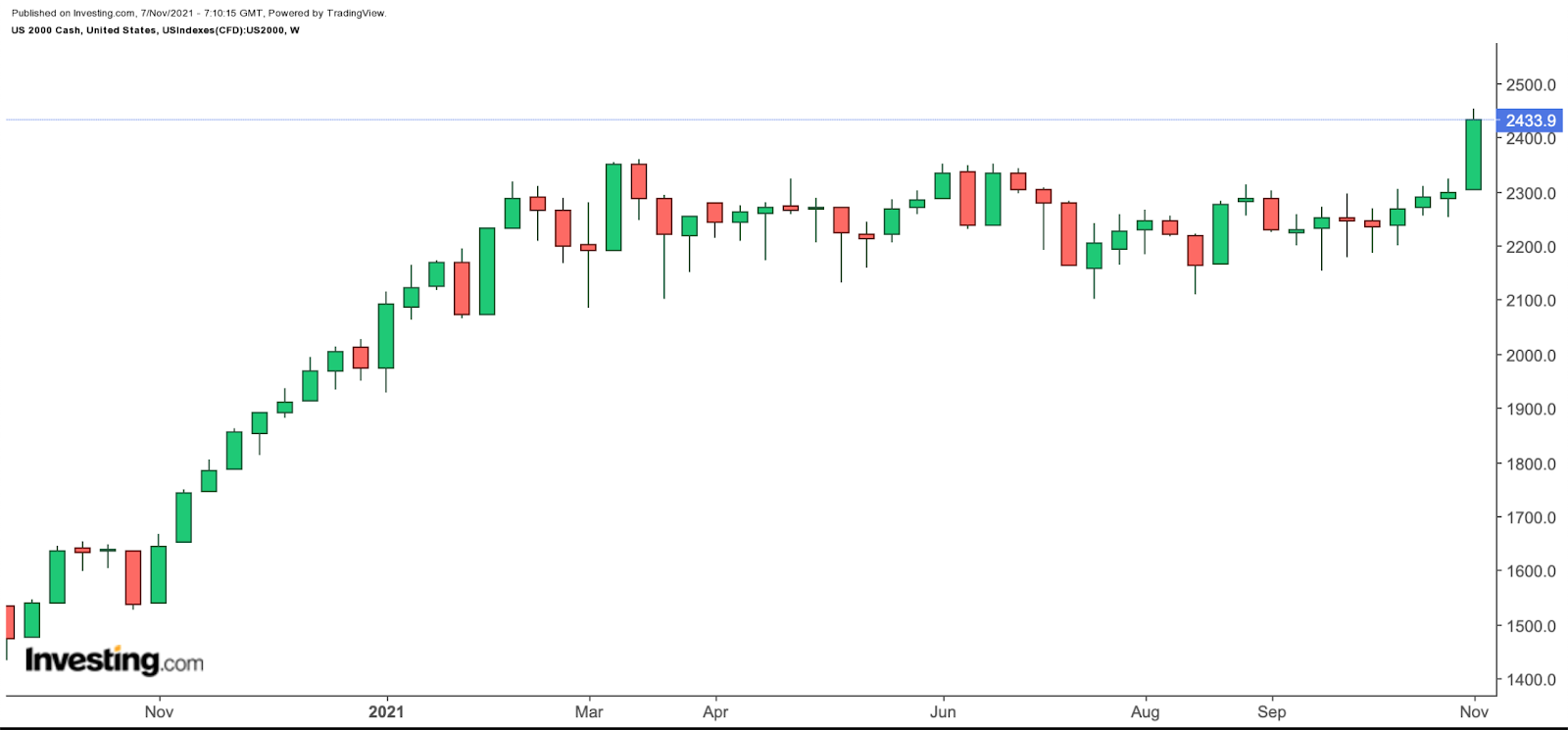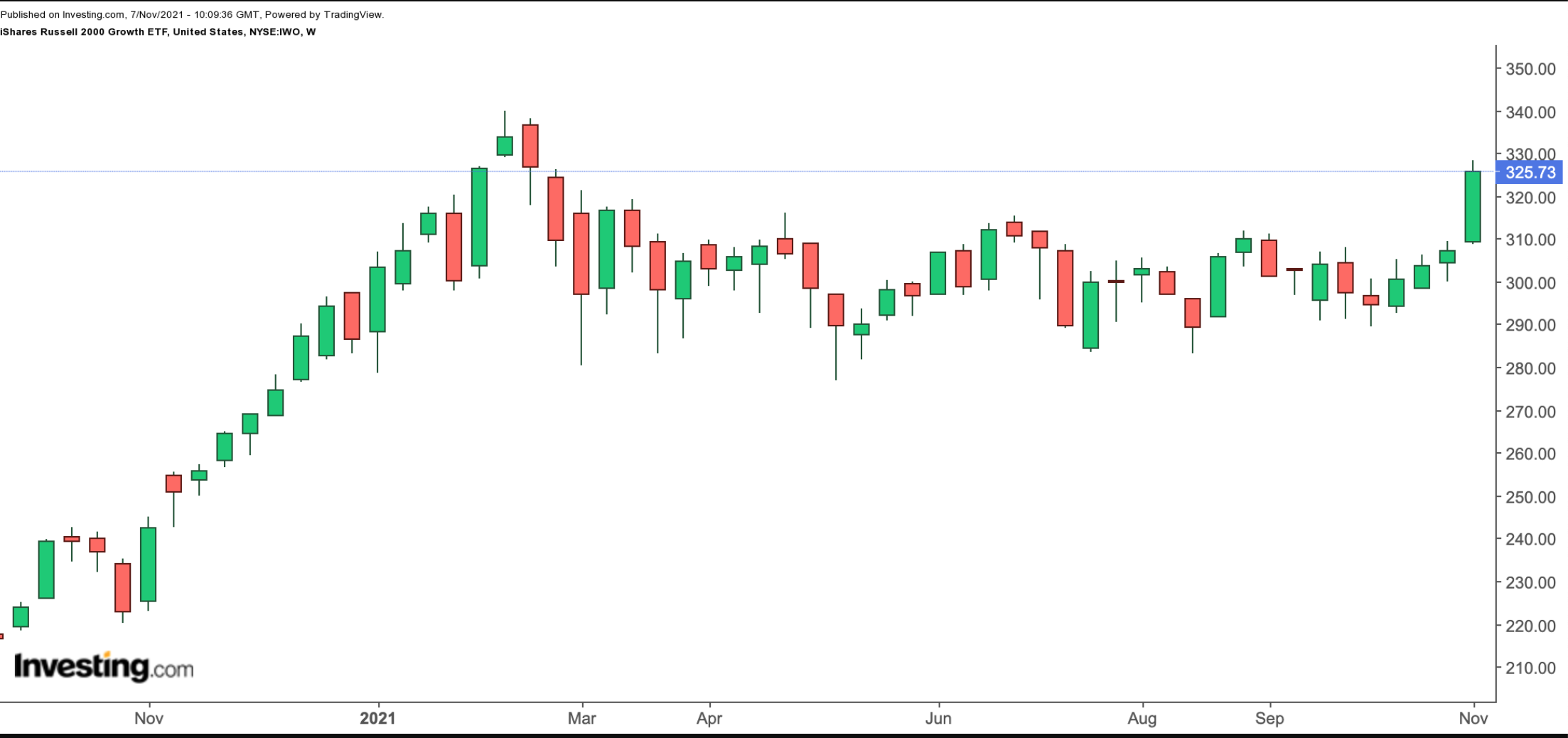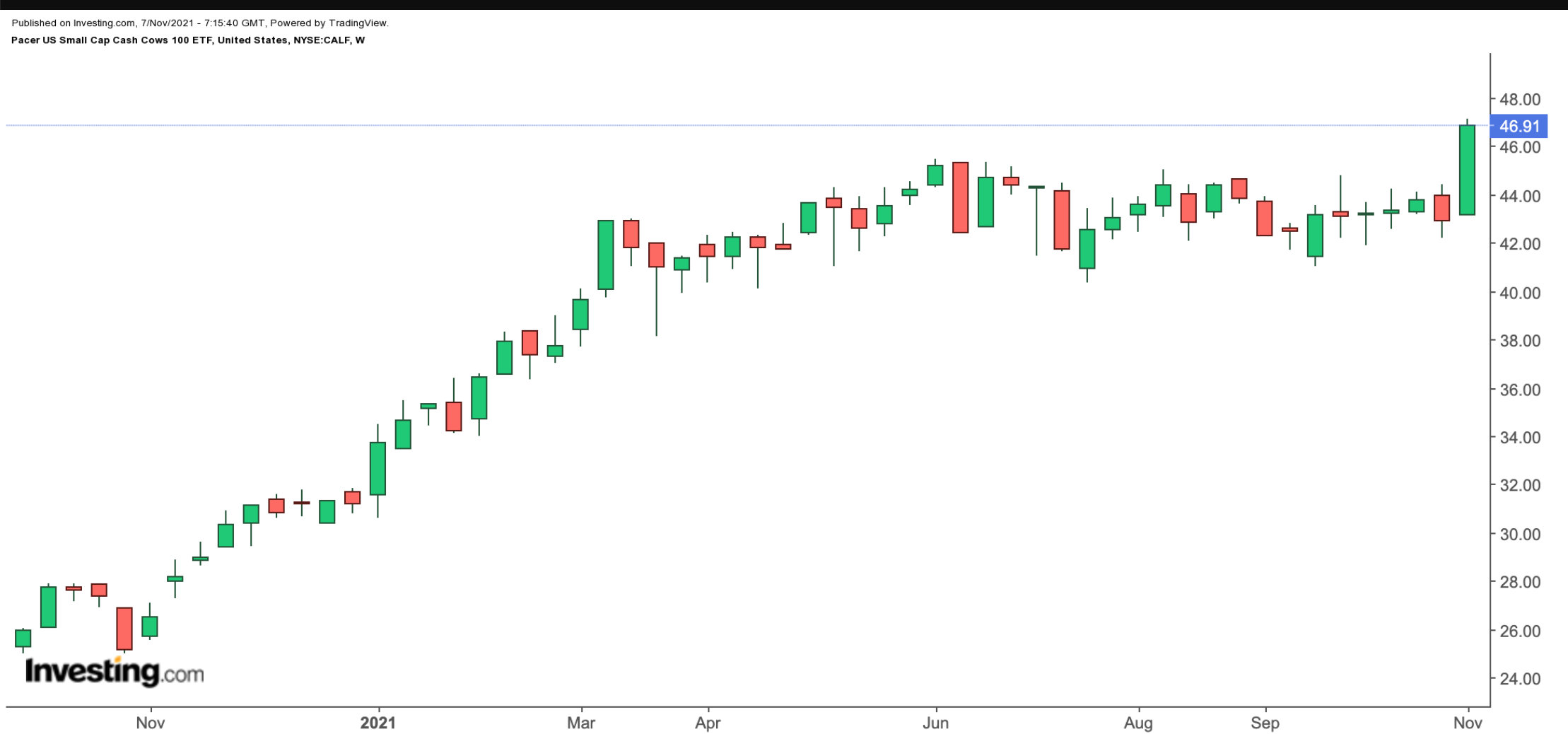Last week, the Federal Reserve announced that it would maintain its accommodative monetary policy but begin tapering asset purchases. In other words, it is decreasing the massive bond-buying program that has helped prop up the US economy during the height of the global coronavirus pandemic.
However, the Fed is in no hurry to raise interest rates as it considers inflation to be ‘transitory.’ Most readers are familiar with the fact that the two goals of the US central bank are “maximum employment and price stability. It also seeks to achieve maximum employment and inflation at the rate of 2 percent over the longer run.”
Following the Fed’s decision, broader markets hit new highs. Investors also noted that the widely followed index of small capitalization (cap) shares, the Russell 2000 reached a record high as well.
Therefore, today’s article introduces two exchange-traded funds (ETFs) that could appeal to readers following the small-cap space. Recent research highlights: “the outperformance of small-cap stocks relative to their larger-cap counterparts. In particular, small-cap ETFs outperform large-cap ETFs in overall raw return terms.”
Yet, higher returns and the growth aspect usually come with high volatility. With that information, here are our two funds that could be of interest:
1. iShares Russell 2000 Growth ETF
- Current Price: $325.73
- 52-week Range: $240.23 - $339.91
- Dividend Yield: 0.29%
- Expense Ratio: 0.24% per year
The iShares Russell 2000 Growth ETF (NYSE:IWO) gives access to US small caps whose earnings are expected to grow at an above-average rate relative to the market.

IWO, which has 1,222 holdings tracks the Russell 2000 Growth Index. It started trading in July 2000; net assets stand around $12.9 billion.
Health care shares have the highest slice at 28.21%. Next in line are information technology (IT), (22.52%), industrials (14.52%) and consumer discretionary (14.37%). The top 10 names make up about 5% of net assets.
Leading businesses on the roster include the designer and seller of footwear and accessories Crocs (NASDAQ:CROX); Lattice Seminconductor (OTC:LTTC), which designs programmable logic semiconductor products; Tetra Tech (NASDAQ:TTEK), which offers call-center, e-mail and online messaging services; clinical-stage genome editing group Intellia Therapeutics (NASDAQ:NTLA); and transportations group Saia (NASDAQ:SAIA), which offers less-than-truckload (LTL) services.
Year-to-date, IWO returned 13.6%, and hit an all-time high (ATH) in February, after which it declined over 15%. The recent up move started in October as the ETF returned close to 10% in a month.
Current P/E and P/B ratios of 36.84x and 6.09x, respectively, show overstretched multiples. A potential decline toward $315 would offer better value. We should also remind readers that the fund is tilted toward health care and IT sectors. Therefore the performance of shares in these segments will affect the performance of IWO.
2. Pacer US Small Cap Cash Cows 100 ETF
- Current Price: $46.91
- 52-week Range: $26.55 - $47.15
- Dividend Yield: 0.48%
- Expense Ratio: 0.59% per year
Among the metrics used to evaluate a firm's financial performance is free cash flow (FCF), the amount left after it has paid expenses, interest, taxes, and capital expenditure. Put another way, FCF shows the leftover cash amount at a given period such as the quarter or year-end. Management is ‘free’ to use this amount as appropriate. For instance, it might return money to shares holders (such as via dividends or share buybacks), pay off debt, or fund growth opportunities.
The Pacer US Small Cap Cash Cows 100 ETF (NYSE:CALF) invests in the top 100 small-cap names within the S&P SmallCap 600® index based on their free cash flow yields. Fund managers use the enterprise value, or the total value of the firm—irrespective of how it is financed, as the valuation metric in the denominator.

CALF started trading in June 2017. The top 10 names make up about 22% of the net assets of $556.6 million. In terms of sectors, we see consumer discretionary (49.6%) followed by industrials (13.3%), health care (8.2%) and energy (7.8%).
Leading holdings include the omnichannel retailer Macy’s (NYSE:M); media group Meredith (NYSE:MDP); jewelry retailer Signet Jewelers (NYSE:SIG); oil and gas explorer and producer PDC Energy (NASDAQ:PDCE); and new and used car retailer Group 1 Automotive (NYSE:GPI).
The fund returned 73.7% in the past year and 50.3 in 2021. It hit an ATH on Nov. 4, almost a year after it fell to a record low on Nov. 6, 2020. Potential investors could regard a pullback toward the $44 level as a better entry point.
